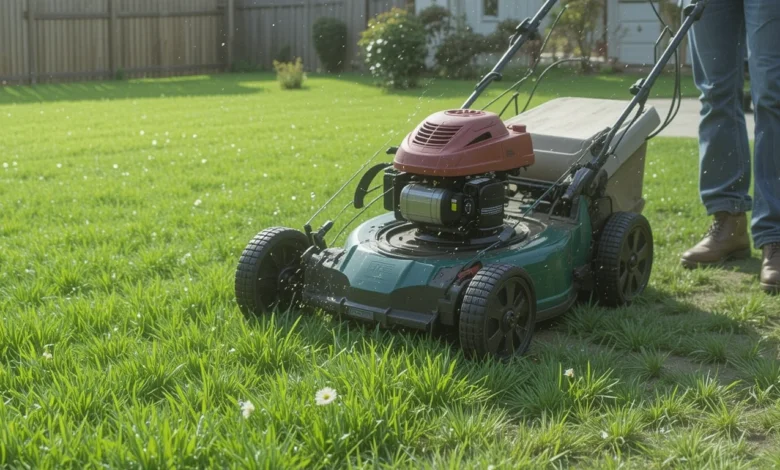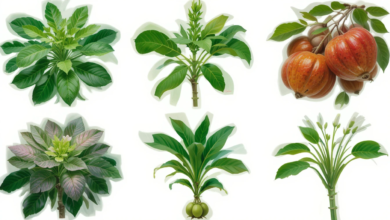When to Mow Your Lawn After Winter for Healthy Grass

After a long winter, your lawn may look a little rough, and the thought of mowing it might seem like a distant memory. But mowing your lawn at the right time after winter is essential for promoting healthy growth and a lush, green yard. Knowing when to mow and how to prepare your grass for the season can set the stage for a beautiful lawn throughout the year.
In this article, we’ll walk you through the best practices for mowing your lawn after winter. We’ll cover everything from the right time to mow, how to care for your grass, and tips for ensuring a lush and healthy lawn as the weather warms up.
Why Timing Is Important for Mowing Your Lawn After Winter
Mowing your lawn too early or too late can affect the health of your grass. Grass goes through a natural cycle of dormancy in the winter, and it needs some time to recover in the spring before you mow it. If you mow too early, you can cause stress to the grass, which might stunt its growth. On the other hand, if you wait too long, your lawn can become overgrown, making it harder to get an even cut and potentially damaging the grass.
Mowing your lawn at the right time helps:
- Encourage new growth: Mowing in the early spring removes dead grass and helps your lawn grow stronger and healthier.
- Prevent weed growth: Proper mowing can help prevent weeds from taking over your lawn.
- Improve lawn appearance: Regular mowing throughout the spring and summer ensures your lawn looks neat and well-maintained.
When Should You Mow Your Lawn After Winter?
The right time to mow your lawn after winter depends on several factors, including the type of grass you have, the weather conditions, and the region you live in. Here’s a breakdown of when to mow your lawn based on these factors:
1. Wait Until the Grass Starts Growing Again
The first rule of thumb is to wait until the grass begins actively growing. Grass needs to warm up before it starts growing again, and it can’t be mowed while it’s still dormant. To know when it’s time to mow, check the weather and observe your lawn. Here’s how to tell when the grass is ready:
- Check the soil temperature: Grass typically starts growing when the soil temperature reaches about 50°F to 55°F (10°C to 13°C). You can use a soil thermometer to check the temperature or simply wait until the air temperature consistently stays above 50°F during the day.
- Look for green growth: After the winter frost has melted, your lawn should begin to show signs of green grass. If your grass is still brown and brittle, it may not be time to mow yet. Wait for the grass to turn green and appear healthy.
2. Consider the Type of Grass You Have
Different types of grass have different growth cycles, so the timing for mowing after winter can vary based on the type of grass in your lawn. There are two main categories of grass: cool-season grasses and warm-season grasses.
- Cool-season grasses (like Kentucky bluegrass, fescue, and ryegrass) grow best in the spring and fall, and they usually begin growing when temperatures rise to about 50°F (10°C). If you have cool-season grass, you’ll want to start mowing in early to mid-spring.
- Warm-season grasses (like Bermuda, zoysia, and St. Augustine grass) thrive in hot weather and usually remain dormant during the winter. These grasses begin growing in late spring or early summer, so you’ll need to wait longer to mow them.
Read More: 8 Best Ground Covers for Pathways and Patios Between Pavers
3. Wait for the Soil to Dry Out
Even though the grass may start to grow in early spring, it’s important to wait for the soil to dry out before mowing. Mowing a wet lawn can cause damage to the grass and make the lawn mower less effective. If the soil is too wet, the mower could leave deep ruts, and the grass could be torn instead of cut, resulting in a patchy lawn.
To check if the soil is dry enough:
- Walk on your lawn and see if you leave footprints or if the grass feels squishy. If you do, the soil is still too wet.
- Wait for at least a couple of dry days in a row before attempting to mow.
4. Mowing for the First Time in Spring
Once your grass is actively growing and the soil has dried, you can start mowing. Here’s what you should do for the first mow of the season:
- Set the mower blade high: For the first mowing, set your mower blade to its highest setting. This helps avoid cutting the grass too short, which can stress the lawn. It’s better to take off a little at a time rather than cutting too much.
- Mow when the grass is dry: As mentioned earlier, mowing a dry lawn is the best way to get a clean, even cut.
- Don’t mow too early: If you mow too early, you could damage new shoots and stunt the growth of your grass. Wait until the grass is healthy and green before mowing.
5. Frequency of Mowing After Winter
After the first mow, you should start mowing your lawn regularly. The frequency will depend on how fast the grass is growing, but here’s a general guideline:
- Early Spring: You may only need to mow once every 10 to 14 days, as grass growth is still slow.
- Late Spring to Summer: As temperatures warm up, your grass will start growing faster. You’ll likely need to mow once a week to keep the lawn neat.
- Fall: Grass growth will slow down again, and you may only need to mow once every two weeks.
6. Mowing Tips for Healthy Grass
To keep your lawn healthy and looking its best throughout the season, here are some tips for mowing your lawn:
- Avoid cutting more than one-third of the grass height: When you mow, try not to cut more than one-third of the grass height at a time. Cutting too much can stress the grass and weaken the roots.
- Leave grass clippings on the lawn: Grass clippings are a natural fertilizer for your lawn. If you mow regularly, you can leave the clippings behind to decompose and provide nutrients to the soil.
- Sharpen your mower blades: Dull blades tear the grass rather than cutting it cleanly, which can lead to brown tips and make your lawn more susceptible to disease. Make sure to sharpen your mower blades regularly.
- Change your mowing pattern: Avoid mowing in the same direction every time. Changing the direction helps prevent the grass from leaning in one direction and promotes even growth.
What to Avoid When Mowing After Winter
- Mowing too early: Mowing while the grass is still dormant or wet can damage the grass and stunt growth.
- Cutting grass too short: Short grass is more vulnerable to stress, weeds, and disease. Aim for a height of about 2.5 to 4 inches for most grass types.
- Over-mowing: Don’t mow too frequently in early spring. Grass growth is slow at first, and cutting it too often can harm the lawn.
Conclusion
Mowing your lawn after winter is an essential step to maintaining a lush, healthy yard. By waiting for the right conditions—such as the right temperature, dry soil, and active growth—you can ensure that your grass gets off to a great start for the season. Remember to mow gently at first, set the blade high, and avoid cutting too much at once. By following these tips, you’ll have a beautiful lawn that’s ready for spring and summer.




